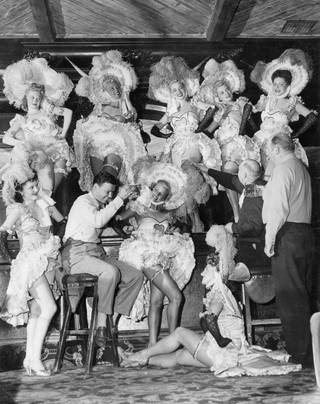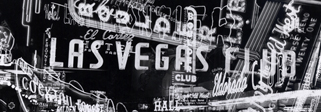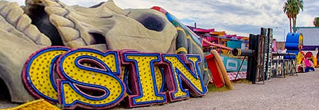Thursday, May 15, 2008 | 3 a.m.
Behind the glitz, the glamour and the greasepaint, Las Vegas showgirls created an image of “Sin City” second to none.
Sparkling G-strings, hot-pink feather boas and towering headdresses made them icons from the 1950s to now.
The topless showgirls evolved out of fierce competition led by the Sands, a hotel with deep pockets for entertainment. In the 1950s the Sands Copa Girls were the premier show under entertainment director Jack Entratter until Harold Minsky introduced his topless showgirls at the Dunes.
In 1952, Entratter opened his first show at the Sands with showgirls wearing costumes costing a total of $12,000, more than the salary of headliner Danny Thomas.
Donn Arden, who followed Minsky’s tradition, produced such monumental shows as “Hello Hollywood Hello” and the original “Jubilee” at Bally’s Las Vegas, demanding that showgirls in his productions could dance as well as carry costumes (some of which weighed 20 pounds) around the stage.
Arden premiered the “Lido de Paris” at the Stardust, a showgirl showcase that ran for 31 years.
Arden started at the Desert Inn during the 1950s with the Arden-Fletcher dancers. In 1951 at El Rancho, the June Taylor dancers introduced acts such as singer Pearl Bailey and comedians Joe E. Lewis and Red Skelton.
Michael Green, a history professor at the College of Southern Nevada in Las Vegas, said that earlier images of showgirls as glorified, gussied-up call girls were misleading.
Showgirls often went to UNLV or UNR and earned degrees. They married and had children and joined the PTA. They became real estate agents like Diane Varney, a former “Lido” and “Folies Bergere” dancer.
In recent years, after peaking in the 1960s, major productions featuring showgirls dropped to two: the “Folies Bergere” at the Tropicana and “Jubilee” at Bally’s.
Newer audiences seek spectacles such as Cirque du Soleil’s “Ka” or “Mystere” instead of the lavish production numbers and scantily clad showgirls. Because showgirls and the rooms they starred in began to disappear, some took matters into their own hands to preserve the images.
In 1982, Las Vegas showgirl Terry Ritter set up an easel in the corner of a backstage shower at the Tropicana. Between acts of “Folies Bergere,” Ritter began applying paint to canvas. Why use a shower as a studio? It had the best light.
Another who acted was Reno showgirl Karen Burns, who collected 1,200 pieces of everything from black top hats to rhinestone armbands in an effort to preserve sparkling memories.
In June 2007, the first Showgirl Art Competition Exhibition opened at the Nevada State Historical Society in Reno. The exhibit displays colorful snapshots of the showgirls from Las Vegas and around Nevada. The showgirl reunion and the art competition came after 15-year Stardust and Reno veteran showgirl Lou Anne H. Chessik began to worry about what kind of legacy showgirls would leave when the Stardust was demolished in 2007.
“You can implode hotels and sell off the contents,” Varney told The New York Times at the Reno exhibit’s opening, “but art won’t vanish. Art is forever.”
One of the most famous showgirl photos became “Miss Atom Bomb.” The showgirl who posed for the photo remained anonymous until Atomic Testing Museum historians discovered it was a Copa Girl named Lee Merlin. Las Vegas News Bureau photographer Don English simply plucked her out of the chorus line.
Although the shows are disappearing, the showgirls will be remembered for a long, long time.
Intern Bethany Acree contributed to this story.


 Explore Las Vegas’ past and present
Explore Las Vegas’ past and present Boomtown: The Story Behind Sin City
Boomtown: The Story Behind Sin City Neon Boneyard: A 360° look
Neon Boneyard: A 360° look Mob Ties: See the connections
Mob Ties: See the connections Implosions: Classic casinos crumble
Implosions: Classic casinos crumble